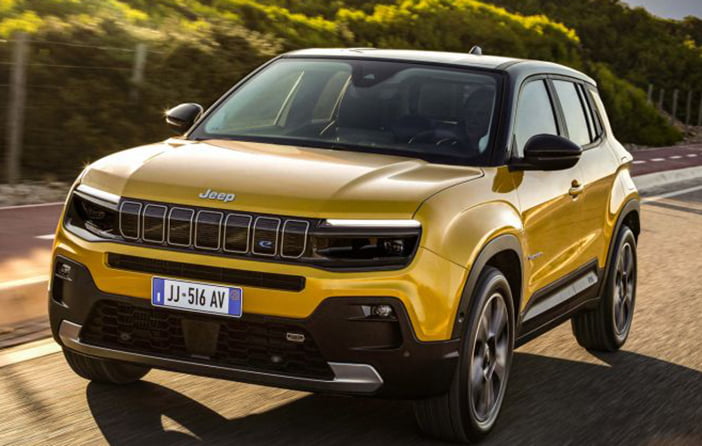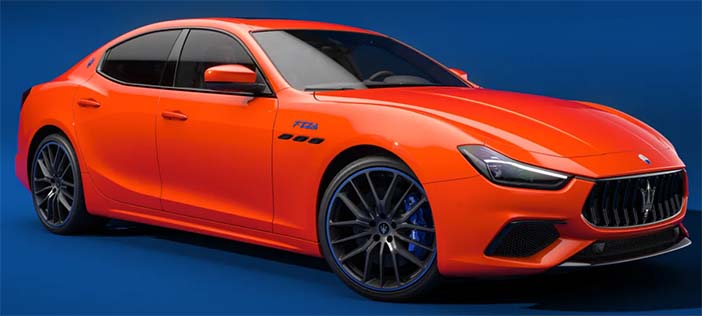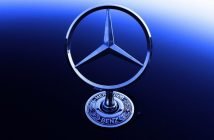+++ EUROPEAN UNION and U.S. officials will hold talks to discuss ways to grant EU companies, including electric car makers, the same status as U.S. companies in the U.S. market, to avoid what the EU calls discrimination against its producers by the U.S. Inflation Reduction Act, a top EU official said. The EU is complaining that while it allows government tax breaks or subsidies for purchases of U.S. electric cars like Tesla, the United States makes such support conditional on the car, or parts of it, being made in the United States. “Last month, the Tesla Model Y was the most-sold car in Germany”, European Commission vice president Valdis Dombrovskis, responsible for trade, told. “That would not have been possible without the un-discriminatory EU subsidy, while EU electric cars do not get a similar subsidy in the U.S., which is discrimination that we want to address”, Dombrovskis said. The EU car makers, such as Volkswagen, are affected by the U.S. legislation, which covers a host of other products. He said the problem also concerned a wide range of goods from the “green economy” sector, including batteries, hydrogen, and renewable energy equipment. There is a willingness to engage on the U.S. side on this”, Dombrovskis said ahead of meetings on the issue with U.S. Trade Representative Katherine Tai, Commerce Secretary Gina Raimondo and Treasury Secretary Janet Yellen. “We hope we can resolve these issues before they become disputes”, he said, adding talks would focus on whether changes to the status of EU companies could be made through implementation regulations to the U.S. law, rather than having to send the whole Inflation Reduction Act back to Congress for amendments. +++
+++ The plug-in hybrid version of the JAGUAR F-PACE is among the best long-distance family vehicles and it’s not a surprise that it’s not the most agile SUV in terms of road behavior. A recent moose test confirms the F-Pace P400e has not been designed for track use but that doesn’t mean it’s not safe and stable around corners. Here’s what the numbers tell us. The test pilot explains the revised version of the F-Pace almost feels like a different car compared to the pre-facelift model. The older model was more agile and direct, while the newer is more comfortable and has superior ride quality. The differences are not that significant when the vehicle is on the track, though. The first attempt around the cones in the moose test is performed at 77 kph with the driver having no expectations regarding the way the SUV is going to react. This attempt is not successful due to the noticeable understeer but beyond that, the F-Pace PHEV remains predictable and safe in the manoeuvre. The highest achieved speed is 71 kph, which is just slightly slower than the previous version of the SUV (74 kph). With this speed, there is basically no understeer, though other attempts at higher speeds turned out unsuccessful due to the SUV hitting the cones. The test driver also says, despite its comfortable suspension setup, the F-Pace doesn’t show a noticeable body roll. The electrified SUV was also tested on a slalom course and notes it did well despite its large size and high weight close to 2.200 kilograms. The very responsive and powerful plug-in hybrid powertrain compensates between the cones, helping the F-Pace register a decent time of 24.3 seconds for the entire manoeuvre. As a reminder, the F-Pace P400e combines a 2.0-litre turbocharged petrol engine with an electric motor for a peak output of 404 hp. The power is channelled to the wheels through an 8-speed automatic gearbox. +++
+++ JEEP confirms that, at the upcoming 2022 Paris Motor Show, it will unveil the brand’s first all-electric model, the Avenger, which is a compact SUV. The presentation of this model has been set for October 17. According to the company, customers in select European markets (Italy, France, Germany, Spain, Belgium and the Netherlands) will be able to place reservations for the Avenger after the press conference. Other markets will follow (United Kingdom in January 2023). Outside of Europe, the Jeep Avenger will be available also in Japan and South Korea. Jeep says that the Avenger is “rightsized” for the European market. Its target range is estimated at 400 km on the WLTP test cycle. That’s all I know for now. Production of this model will take place at Stellantis’ plant in Tychy, Poland. “The all-electric Jeep Avenger will offer Jeep brand capability that is rightsized for the European market delivering a targeted electric range of 400 km, combined with modern and technologically advanced interior, with plenty of space for people and cargo”. Jeep already offers 3 plug-in hybrid models in Europe: the Compass 4xe, the Renegade 4xe and the Grand Cherokee 4xe. However, the future of the brand is 100% electric as the company set a goal to offer only battery-electric models in Europe by 2030. By 2025, Jeep will introduce 4 BEVs in Europe; some of them will be offered globally. Christian Meunier, Jeep brand CEO said: “The new Avenger spearheads the introduction of a portfolio of all-new Jeep BEVs in Europe. It offers Jeep brand capability that is rightsized for the market and during its introduction at the Paris Motor Show, we’ll showcase why it is a great all-electric Jeep brand alternative to current players in the segment. The Avenger is a milestone for our growth plans in key European markets, such as France, and on our path to becoming the leading zero-emission SUV brand in the world”. +++

+++ In 1958, racing driver Maria Teresa De Filippis became the first woman to qualify for a Formula 1 race at the wheel of a MASERATI 250F. This year, to commemorate her trailblazing talent, Maserati is releasing special edition versions of its Ghibli and Levante. Each wears the “FTributo” badge and features unique exterior colors and cabin details. Maserati offers 2 new exterior colors for the FTributo, Grigio Lamiera or Arancio Devil, the latter is an orange shade inspired by Maria Teresa’s “she-devil” nickname, according to the firm. Both the Ghibli and Levante FTributo are fitted with 21 inch alloy wheels, with a “Titano” design for the Ghibli and “Anteo” items for the SUV. When orange paint is specified, the wheels are finished in a contrasting grey colour, with cobalt blue accents picking out the edge of the rims, FTributo emblems and Maserati’s trident logo. Grigio Lamiera models receive gloss black alloys and bright orange detailing. The colour scheme continues inside with orange and blue stitching for the full-grain black leather upholstery, and FTributo logos on the headrests. Customers can also opt for orange leather trim, with gloss carbon fibre inserts for the centre console, dashboard and door cards. Maserati hasn’t provided production numbers for the Ghibli and Levante FTributo, but claims that they will be “limited series” models. It’s also unclear what choice of engines will be available; the Ghibli and Levante can currently be specified with either 2.0-litre 4-cylinder or 3.0-litre V6 petrol motors, with the V8-powered Trofeo variants topping the range. The limited-run cars don’t feature the same aggressive bodywork as the V8 flagships, so we expect them to arrive with the lesser engine options. +++

+++ MERCEDES-BENZ boss Ola Källenius recently gave an interview. Like most legacy automakers, Källenius believes there’s still a place for combustion-powered cars, and there will be for some time. However, he notes that luxury car shoppers are likely to accelerate the shift to EVs. Tesla is the most successful global EV maker to date, and it has taken a huge amount of market share away from rival luxury brands. Some may argue that Tesla isn’t a true “luxury” automaker, but it matters not. The fact is people are buying Tesla vehicles and skipping those from German luxury automakers, such as Audi, BMW, and Mercedes-Benz. Mercedes’ CEO made it clear that the automaker still intends to produce ICE cars into the future, but it may not last much longer. If shoppers increasingly choose EVs over combustion cars, it will only make sense for the brand, and arguably its rivals, to transition its product lineup more quickly. Källenius pointed out that the market is already clearly in the process of transitioning. He explained in an interview with Cramer that was part of the channel’s ESG Impact conference: “Step by step, we see the market turning. I really believe that in this decade, we will flip from being based upon high tech internal combustion engines to going dominant electric, if not all electric, in the luxury segment”. This is interesting since it wasn’t long ago that nearly every luxury automaker was pushing back against EVs. Now it seems most are beginning to see the future much like Källenius. Regardless of the CEO’s beliefs and forecasts, what may be more important to some is what he intends to do about them. Källenius goes on to say that Mercedes knows climate change is a real problem and adds that we must deal with CO2 emissions. He also shared that the problem “ends on the desks of our engineers”, Kallenius said: “We do it because we think it’s right. But we also do it because we think it’s going to be the better business. I don’t think there’s any question for a modern company, a forward-thinking modern company, that we need to decarbonize”. Nonetheless, Mercedes will still sell both combustion and electric cars for many years to come, though the company’s CEO thinks customers will increasingly choose EVs over the combustion-powered options going forward. He also shared that most electric options are already sold out, at least for the time being, so some people who want to make the switch simply may not have the option. The fact that the electric choices are selling out could be seen as further proof that Källenius’ predictions are based on the demand the company is already realising. +++
+++ POLESTAR boss Thomas Ingenlath has said the firm has no plans to launch a car smaller than the Polestar 2 in the future, stating that the goal is to focus on a select, rounded portfolio. The Sino-Swedish firm launched the 3, a large SUV, earlier this week, which follows the 2 saloon. It has also confirmed plans for its next 3 models: the 4 will be a smaller SUV that sits between the 2 and 3; the 5 will be a Porsche Taycan-rivalling grand tourer; and the 6 will be a 2+2 convertible. The 3 is based on the new SPA2 platform that is shared with the forthcoming Volvo EX90, allowing the 2 sibling companies to share manufacturing and production costs. Volvo is working on a small SUV that will be positioned below the XC40 and use the new SEA platform, but Ingenlath suggested Polestar has no plans to follow suit. But asked about whether Polestar will develop a small car in the future, Ingenlath said: “We have no plans for the moment to cater for a smaller car than 2 as it is, and in the future of course we want to keep such a position in our portfolio. But today we don’t see that we will extend into a smaller car segment, as much as the temptation is to design a smaller Polestar. It’s about focus”. The 6 is due in 2026 and Ingenlath said it will “complete” the firm’s current portfolio. He added: “Adding the Polestar 6 is the final touch to getting a complete portfolio together, because that type of brand driver model and the luxury of having a 2+2 seater in our portfolio really made that product off the ground. The 2 SUVs we will have, the 2 fastbacks and then the 6 roadster: by 2026 we’ll have achieved within a very short time a very rounded portfolio to carry the brand. Doing much more, or any more, than that would be a distraction. It’s not the idea to explore each and every corner of the market and look at what else we could imagine doing, but to have that clear dedication to say ‘hey, that’s a family’, and we see that developing nicely”. +++
+++ The launch of the new electric PORSCHE Macan has been delayed for a year because of slower than expected software development within the wider Volkswagen Group. The Macan EV will be one of the first production cars to use Porsche and Audi’s Premium Platform Electric (PPE) architecture, but Porsche has now confirmed that it won’t be released until 2024. Problems surrounding the production of the E3 1.2 software platform by Cariad, the software division of the Volkswagen Group, are partly to blame for that delay. Porsche confirmed the news in the shares prospectus it issued as part of its IPO last month, when it made 911 million shares available (a nod to its flagship sports car). The flotation valued Porsche at roughly €75 billion. The delay could also knock back the launch timetable of “in particular BEV models of the 718 Boxster and Cayman, and the next Cayenne”, Porsche warned in the prospectus. No launch timetable has been given for those cars, though. Also in the prospectus, Porsche warned that Cariad’s parallel development of a separate E3 2.0 software stack meant that it “could potentially allocate greater development capacity and resources to its E3 2.0 version to the detriment of further development of the E3 1.2 platform”. Porsche has an option to not take the E3 2.0 software stack and go its own way for future vehicles, it noted in the prospectus, and a decision on this is to be made next year. Porsche has been vocal in the past about not being tied to the Volkswagen Group’s future platform strategy, both physical and digital, particularly with the Scalable Systems Platform (SSP) for EVs, which will ultimately replace the PPE. Porsche has said it will lead development of a performance version platform called SSP Sport, which will underpin the next Panamera and Taycan, as well as an unnamed “new fully electric luxury SUV model”. Ultimately, Porsche will shift all of its SUV and saloon models to the PPE and there will be “a bespoke architecture for 2-door sports cars”. Porsche said in its prospectus that “the launch of the SSP Sport will not depend on other SSP platforms developed by the Volkswagen Group”, indicating that it will move at its own speed in future, possibly because it plans to separate from the rest of the group on software strategy. Porsche has said it expects more than 50% of cars delivered in 2025 to be electrified, rising to 80% fully electric by 2030. Last year, EVs (all of them Taycan derivatives) comprised 14% of Porsche sales, while plug-in hybrids took 11%. The Macan EV will use a similar 800 Volt electrical architecture to the Taycan “with improvements in range”, said Porsche. Porsche started testing the SUV in May 2021. It will be built at its Leipzig factory, where the petrol Macan is produced. +++
+++ We already knew that SONY HONDA MOBILITY will begin selling EVs in 2025 for delivery in 2026. The joint venture between the 2 Japanese giants was officially announced earlier in 2022, and while there are still big gaps in our knowledge of the vehicle, the companies announced that it will be a premium and “high value-added” product that’s not intended for huge sales volume. Whether that means a very high price (it’s not clear how much range or what kind of batteries the EV will use, either) remains to be seen. For what it’s worth, Yasuhide Mizuno, chairman of Honda Mobility, told Nikkei Asia that it will sell the vehicle for “a reasonable amount”. As you’d expect, Honda comes to the table with decades worth of car-building experience and a dozen plants in the United States, where the vehicle will be built. U.S. customers will also get first crack at the vehicle, with orders planned for 2025 and deliveries slated for 2026. Sony will focus on in-car software, entertainment, sensors and other vehicle technologies. The company will reportedly focus on an online-first sales model. Will Sony Honda Mobility’s first product look like the Vision-S 01 or Vision-S 02 concepts we saw unveiled at previous CES events? Will they (hopefully) get better names? Will it offer more advanced self-driving tech than rivals like Tesla, General Motors, Ford and Nissan? We look forward to finding out soon enough. +++


